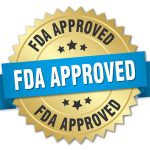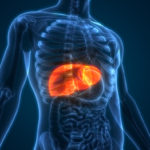
Previous
10 Liver-Friendly Tips for Repelling Mosquitoes

Next
How Dry Cleaning Impacts Liver Health
Toxicity in Arts and Crafts
Artistic hobbies, such as painting and photography, are great ways to relax and express oneself creatively. However, these activities may use industrial, toxic materials – which could be hazardous to someone with liver disease. Learn about the most common known offenders, as well as important tips to help protect your liver from the toxins in art supplies, so you can still safely reap the benefits of these fun hobbies.
A hobby involving the creative mind is a great way to find joy through a focused, imaginative, fun and rewarding activity. Especially when living with the chronic and progressive burden of liver disease, hobbies that inspire creativity can help balance the feelings of powerlessness typical of diseases without a cure. However, in addition to the many benefits artistic pursuits can lend to living with an illness, there may also be some hidden hazards to a person with a stressed liver.
As the body’s premiere cleansing organ, every substance gaining access to the bloodstream must be purified by the liver. Each time a diseased liver must work to break down toxins, the possibility of further organ injury increases. In addition, the liver’s processing ability is impaired when this organ is not functioning at full capacity. Therefore, living healthfully with liver disease means avoiding or neutralizing any unnecessary toxins you may come in contact with. Unfortunately, toxins are often found in the materials used for arts and crafts.
Common artistic hobbies such as painting, photography, ceramics, refinishing furniture or model building may use industrial, toxic materials. While there may be “requires adult supervision” warnings on the label, there will likely be no mention of cautionary use for those with liver disease. Hazardous products include adhesives, paints, spray coatings, markers, photography chemicals and a host of other specialized hobby materials. The toxicity of these substances vary widely both in nature and degree, but solvent-based products used frequently and with poor ventilation can be especially dangerous to people with an impaired liver.
Although inhalation is the most typical method of toxin exposure, consumption or skin absorption also represent hazards. Vapors from solvents, mists from sprays and dusts from mixing dry paints and clays can all be inhaled into the lungs where it subsequently enters the bloodstream, usually unbeknownst to the person. Although most people rely on their sense of smell to detect toxicity, this is a poor gauge of your contact with a solvent, because:
· Some highly toxic solvents have pleasant odors.
· Some substances are toxic at levels where little or no odor is noticeable.
· After a long exposure to toxic substances, your sensitivity to the odor may decrease.
Detection
While recognizing safe arts and crafts products requires some effort, it is worth the time to protect your liver. Spotting key words and toxic chemicals listed on the label will help you choose liver-friendly materials. Most hazardous consumer products must display a signal word. Examples of signal words are listed below:
· Poison – The product is extremely toxic – as little as a taste could be fatal.
· Danger – The product is very toxic, highly flammable or corrosive and is capable of burning the skin or eyes on contact.
· Warning or Caution – While these signal words indicate lesser but still significant hazards, this product is still capable of causing harm to a person with liver disease.
Even though these signal words may portray acute or short-term hazards, repeated exposure to a person with liver disease can easily accelerate the course of his or her illness. Federal regulations require identification of products that may cause long-term health effects, such as birth defects or cancer. For example, rubber cement containing hexane carries the warning, “Prolonged exposure can result in permanent damage to the nervous system.” Older products, which are likely to be even more hazardous, will not have such warnings. Since most products carry the minimum warnings required by law, any labeled warning should be taken seriously by people with liver disease.
Products without label warnings are considered non-hazardous by federal law. Yet as little as 1/4 cup of a “non-toxic” product could be fatal to a small child, and cause liver damage to a person with preexisting liver disease. In addition, surveys have shown that some products labeled as non-toxic may not meet appropriate standards.
Known Offenders
Since people with liver disease need to minimize their exposure to toxins, a description of known offenders can help increase toxicity awareness.
· Adhesives – Some of the most toxic adhesives include contact cement, rubber cement, epoxy, instant glues, plastic adhesives and model glues. The primary hazardous ingredients in adhesives are solvents. By keeping chemicals liquid so they can penetrate and bind to surfaces, solvents usually evaporate quickly into the air giving off toxic vapors.
· Paints – Solvents are also found in paints, where they dissolve pigment and allow paint to spread. Virtually all solvents are toxic, particularly the volatile solvents found in oil-based paint. The pigments in paint can also be hazardous. Some may contain the highly toxic cadmium, lead or arsenic. Because they are exempt from the hazard labeling law, pigments in professional artists’ paint typically contain the highest level of toxicity.
· Markers – Aromatic solvent-based markers are the most hazardous. Xylene or alcohol-based markers pose the greatest threat, and are often identified by being permanent markers.
· Photography Chemicals – The materials used to develop and print photographs are generally considered toxic, especially developers and toners.
· Other Materials – Additional toxic art materials include fiber dyes with potassium dichromate, lead in stained-glass and solder, and certain pottery glazes.
6 Ways to Protect Yourself
Instead of abandoning your artistic pursuits, take these six steps to protect your liver from the toxins in art supplies:
1. Investigate your materials and make certain you are using the safest, most non-toxic versions available.
2. Minimize inhalation of toxins through adequate ventilation and/or wearing a respirator with the cartridge appropriate for the toxic substance being used.
3. Wear gloves to prevent skin contact. Special glove materials are necessary for some solvents.
4. Refrain from eating or drinking in your work area.
5. Help your liver detoxify the toxins that have already gained access to your bloodstream with a reputable formula such as Liv.52/LiverCare.
6. Drink extra, purified water to help your body flush any poisons from your body.
You do not need to abandon your joyful hobby if it involves toxic materials. Being aware of how the media you use can potentially affect your liver is the first step in continuing your artistic interests. Following this discovery, you can make the adjustments necessary to continue expressing your creativity – without perpetuating liver disease.
www.greatlakes.org, Environmental Exposure from Hobbies and Art Activities, Alliance for the Great Lakes, 2007.
www.trueart.info, Health and Safety in the Arts and Crafts, Mary C. Saylor, True Art, 2007.
www.watoxics.org, Art and Hobby Materials, Washington Toxics Coalition, 2007.
www.watoxics.org, Art and Hobby Supplies, Jennie Goldberg, Alternatives: A Washington Toxics Coalition Fact Sheet, 2007.









